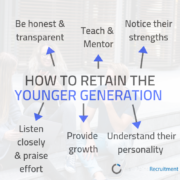Finding a Balance Between Hiring for Skills and Company Culture
Your ideal workplace will have a team that embodies the company’s culture whilst also having a set of skills that allows them to succeed and grow within their role. From our experience in the market, we have often seen employers prioritising talent over cultural fit, whereas recent studies indicate that ignoring cultural fit when hiring can have a detrimental impact on your business. We understand that finding the right balance isn’t an easy task for employers and hiring new staff can be one of the most challenging and time consuming processes.
Skill vs Cultural Fit
In business, it can be difficult to differentiate the importance of a candidate’s skill set in comparison to how that individual will fit into your company culture. Both components are extremely important and essential if you want longevity from your staff. There have been several discussions surrounding this topic and arguments that would challenge whether one weighs a heaver importance than the other.
Every workplace culture is different, team dynamics change and employers need to be aware that the needs of candidates are also changing. When technical expertise and talent is limited in the market, employers tend to overlook cultural fit and hire solely based on the candidate’s skill set. Whilst this may fix a short term problem, it’s likely to have a negative impact on your workplace in the future. Potential candidates will have attributes that are essential for the role, such as experience in a similar position or degree qualifications. They will also possess skills that can be taught, such as writing, math and specific technical skills. These are classified as hard skills and whilst they are highly valuable when selecting a person, they won’t contribute to your company’s culture. The skills that will determine whether or not an employee will be an ideal fit for the company can’t be taught. These are creativity, self-awareness and interpersonal communication skills. You can’t train an employee to get along with their colleagues, they must already possess inherent qualities that align with the values of your business, workplace culture and team. Having the ability to differentiate hard skills from soft skills with allow you to make a distinction between a candidate’s talents and personal values. Employees will feel more comfortable when their values are aligned with others in the workplace, contributing to a positive company culture. A candidate who doesn’t have the skill set but has the motivation and drive to learn could positively impact your workplace culture.
Building a positive company culture
It has never been more beneficial for employers to understand what values and principles align with their business. Understanding the culture and key beliefs of your business will have a positive impact on the relationship you have with your team and your clients. Culture is the voice and character of your business; building this to be a positive voice will improve staff productivity and retention and will improve the overall wellbeing of your team.
When speaking with clients that have created a great place to work, they stated that nurturing the relationships they have with their team and creating a safe space that encourages transparency and drives performance, have led to that “winning” feeling. Leaders that they have hired possessed an optimistic and collaborative approach when managing staff and were always be open to suggestions both from the executive and from those they were managing. They also found that incentivising staff and being clear on expectations as well as the goals of the company gave much more focus and a common purpose to align to. Outwardly, this also assists them in recruiting staff; their reputation for being a great place to work is seen through social media and other channels, meaning candidates become aware of the company and are more willing to approach them for opportunities to join the team. When the culture of your business is communicated clearly you will attract candidates with similar values, resulting in greater alignment and longevity from your staff.
How a recruiter can help
At New Point, we value workplace culture and sourcing well-vetted candidates that fit your team as well as having the skills and experience to perform well in the role. With our experience in the market and access to an extensive network of potential candidates, we have the ability to reach out to people that you aren’t aware of that we know will fit your team and enhance your business. The hiring process differentiates for each business and we can guide you in formulating a great job spec as well as identifying your culture and what makes your company a place that people want to come and do great work. This will ensure you reach the best talent and are presented with the highest calibre of candidates. If you would like to find out how we do this, please call us on 1300 558 979.
Thanks for reading,
Sophie and David.










